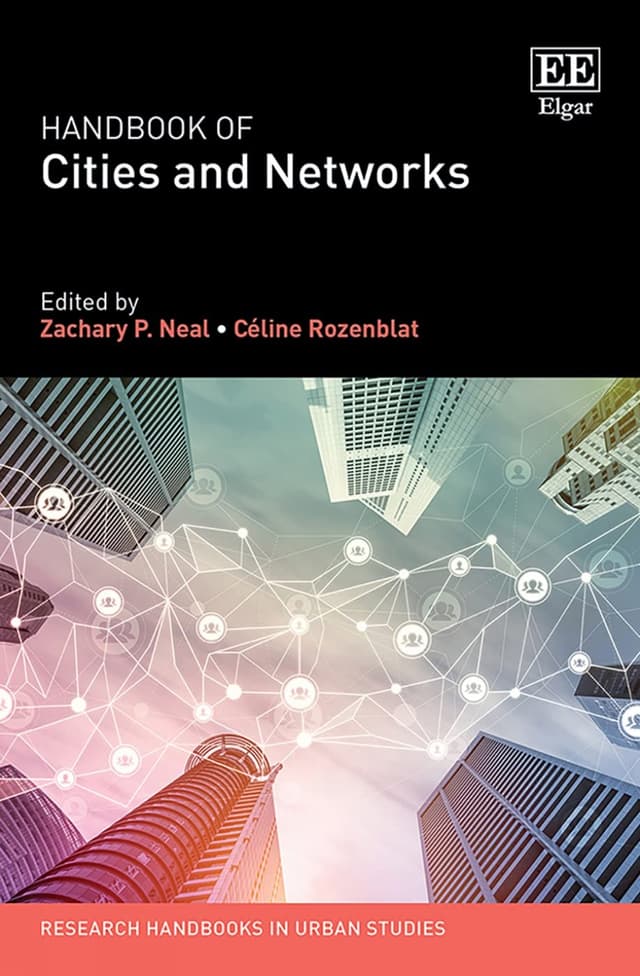Colin Nagy | August 4, 2021
The Public Restroom Edition
On cities, civility, and Tokyo's approach to toilets
Recommended Products

This Handbook of Cities and Networks provides a cutting-edge overview of research on how economic, social and transportation networks affect processes both in and between cities. Exploring the ways in which cities connect and intertwine, it offers a varied set of collaborations, highlighting different theoretical, historical and methodological perspectives.
Colin here. While there are many sexy metrics for urbanism (public parks, transport, small business, etc.), I think a measure of a city’s true civility can be measured by access to public toilets. Spend any time in Tokyo and you’ll find them in subway stations and interwoven into the city. They may be sparse, utilitarian setups with no hand soap (because attendants can’t keep up with the volume), but they are still there. In cities like New York, this is not the case. While there have been a few one-off efforts to improve the situation (including some corporate-sponsored ones), the burden largely falls on private business. All of a sudden, it is Starbucks’ responsibility to provide restrooms to all that need them.
This wasn’t always the case. According to Marketplace:
In the middle of the twentieth century, public toilets were relatively common in the United States. For the most part, people had to pay for the stalls, which opened with coins, while urinals were free. But with rising feminist sentiments in the 1970s, people started to recognize this arrangement as sexist, since it meant that women had to pay, while men did not. Over the following decade, the grassroots organization Committee to End Pay Toilets in America succeeded in getting bans on pay toilets in many states, and the late March Fong Eu, California secretary of state from 1975 to 1994, smashed a porcelain toilet with a sledgehammer on the steps of the State Capitol.
The banning of pay toilets had an unintended outcome. Instead of free public toilets for all, public toilets pretty much disappeared from American cities, since cities found it expensive and difficult to keep them safe and clean.
It’s true, there has been some progress. According to the Times, “Amtrak has spiffed up tired old restrooms at Pennsylvania Station, the busiest transportation hub in the Western Hemisphere, with new terrazzo floors, sleek gray stalls, and hands-free faucets and soap dispensers. In the men’s room, there is a row of urinals by Toto, a luxury brand that is used in the bathrooms of the Metropolitan Museum of Art and the Mandarin Oriental.” But it still is a metric that is decidedly lacking. If you’re a tourist or anyone who needs to spend long stretches of time untethered to an office, you know the feeling. This was further accelerated by COVID. Where do delivery people and essential workers go if everywhere is closed? Turns out access to bathrooms should be a baseline element of dignity in a civilized society.
Why is this interesting?
In what amounts to popping an urbanism wheelie and showing up the rest of the world, Tokyo recently opened up nine public bathrooms to coincide with the Olympics, designed by famous architects and designers.
According to Architectural Digest:
The toilets were part of Tokyo’s beautification efforts before the Summer Olympics. In fact “Toilet Park” in Nabeshima Shoto Park was developed by architect Kengo Kuma, who designed the new National Stadium, the main venue for the Games.
Unveiled in June, Kuma’s Toilet Park is composed of five huts linked by a garden path “that creates a line of flow,” Kuma said in a statement, “with the hope of offering a total experience that encompasses the surrounding environment as well as the structures.”
Though all five units are covered with cedar slats installed at random angles, each has a different interior focused on a different need—including child care, personal grooming, and wheelchair accessibility.
“Unlike conventional public toilets, these are unique in that they can be used by a diverse range of people,” Kuma said.
There are also beautiful works by other notable designers scattered throughout Tokyo. A full list for your viewing pleasure can be seen here.
It would be tempting to write this off as a kitschy stunt. But it solves one of the problems for any city dweller, and maps nicely to the values of cleanliness and hospitality that are core to Japan. What’s more, there’s also a defined statement of intent regarding accessibility and equality. Adding beautiful and inspired design from thoughtful artists is the icing on the cake. (CJN)
Toilet of the Day:
A red toilet in Tokyo designed by Higashi Sanchome.
Quick Links
This book looks intriguing: “This Handbook of Cities and Networks provides a cutting-edge overview of research on how economic, social and transportation networks affect processes both in and between cities. Exploring the ways in which cities connect and intertwine, it offers a varied set of collaborations, highlighting different theoretical, historical and methodological perspectives.” (NRB)
McSweeney’s: How to Escape from a Sleeping Baby (NRB)
[Sponsored Link] Noah here. Another shout out for my company, Variance. We are building a PLG CRM to help software companies grow their customers. There’s a new post up on the blog about the various organizational antipatterns we see around customer data. Get in touch if you have questions or want to learn more. (NRB)
Thanks for reading,
Noah (NRB) & Colin (CJN)
—
Why is this interesting? is a daily email from Noah Brier & Colin Nagy (and friends!) about interesting things. If you’ve enjoyed this edition, please consider forwarding it to a friend. If you’re reading it for the first time, consider subscribing (it’s free!).
